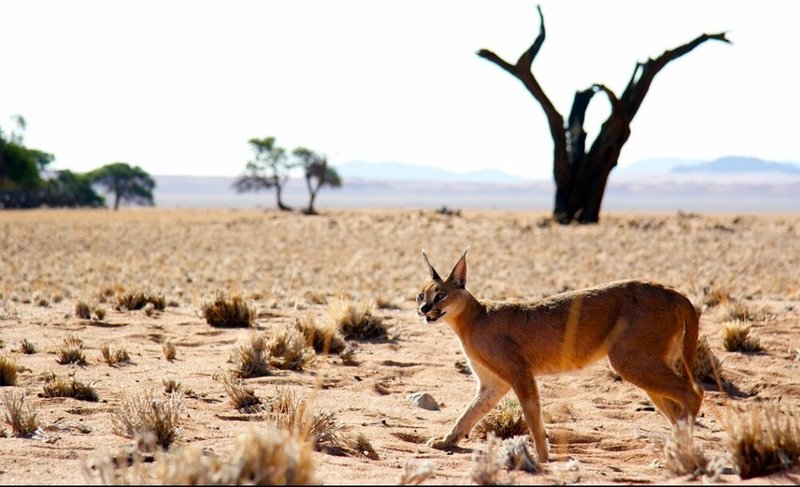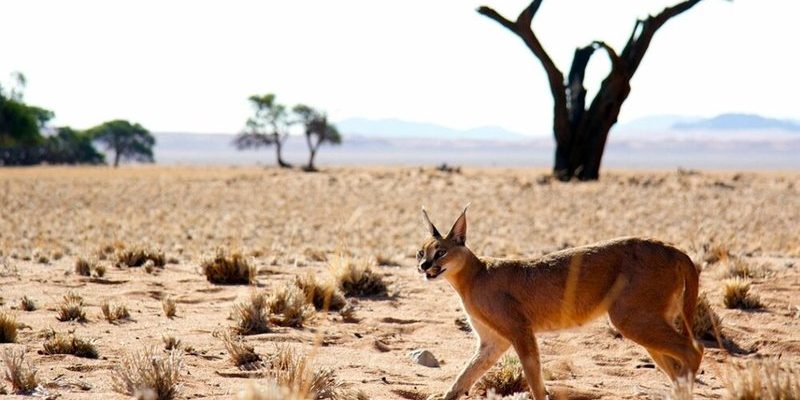
Caracals are like the ninjas of the cat family, not just for their stealthy hunting skills but also for their ability to thrive in diverse environments. You might be surprised to learn that these cats adapt well to both arid regions and lush landscapes. In this article, we’ll explore the unique habitats of caracals, their distribution, and what makes each location special for these remarkable creatures.
Understanding Caracal Habitats
Caracals are incredibly versatile, which is central to their survival. They primarily inhabit areas that offer a mix of open land and some cover, allowing them to hunt effectively while also avoiding larger predators. You might picture a caracal lounging under the shade of a tree or pouncing on unsuspecting prey in the grasslands.
The landscapes where caracals thrive include:
- Savannas: These grassy plains provide a perfect hunting ground.
- Woodlands: Here, the caracal can sneak through the brush.
- Mountainous Areas: Caracals even venture into rocky terrains.
- Deserts: Their ability to handle dry conditions is remarkable.
So, what exactly does their habitat look like? Caracals prefer regions with some vegetation, such as shrubs and grasslands, which help them stalk their prey. They don’t need dense forests, but they do appreciate having some cover. Think of it as having just the right amount of camouflage—enough to blend in but not so much that they can’t move about easily.
Distribution Across Africa
Now, let’s get into the nitty-gritty of where caracals live in Africa. These cats are most commonly found in the sub-Saharan regions, which include a wide variety of countries and habitats. From the dry expanses of the Namib Desert to the lush landscapes of West Africa, caracals have managed to make their mark.
In countries like South Africa, Namibia, and Botswana, they flourish in both savannah and arid regions. Their wide distribution allows them to adapt to numerous environmental conditions. Here’s a glimpse into their range in Africa:
- North Africa: Caracals can be spotted in Morocco, Algeria, and Tunisia.
- East Africa: They roam through countries like Kenya and Tanzania.
- Southern Africa: The rich grasslands of South Africa are a haven for them.
Honestly, the adaptability of caracals in Africa is something to marvel at. They’re able to inhabit areas that range from dry deserts to lush grasslands, showing an incredible ability to survive in various environments.
Distribution in Asia
While Africa is their primary home, caracals also have a smaller presence in parts of Asia. You might be wondering how these cats fare in different climates and terrain over there. The range includes parts of the Middle East and Central Asia. Countries like Iran, Afghanistan, and even parts of India have reported sightings.
In these regions, they often find refuge in more rugged terrains, such as:
- Hilly Areas: Caracals can easily navigate rocky landscapes.
- Grasslands: Similar to their African habitat, these open spaces are ideal for hunting.
- Scrublands: These areas provide both cover and great opportunities for catching prey.
It’s interesting to note that the caracal’s adaptability continues to serve them well. Each region presents its own challenges, but their keen senses and hunting skills help them thrive.
Urban Adaptability
In recent years, there have been reports of caracals making their homes closer to human settlements. You might find this surprising because wild cats usually shy away from people. However, certain areas in cities are becoming refuges for these agile hunters, especially where there’s an abundance of prey—like small rodents and birds.
Urbanization presents both challenges and opportunities. Caracals can often exploit the edges of urban areas where green spaces remain. Here’s how they adapt:
- Hunting in Parks: They’ve been spotted hunting in large urban parks.
- Using Buildings for Shelter: They might find hiding spots in abandoned buildings or construction sites.
- Exploiting Food Sources: Rats and pigeons provide a steady food supply.
This urban adaptability showcases the caracal’s resilience. It’s a testament to their ability to navigate changing environments and make the best of what’s available.
Climate Preferences
Caracals are somewhat unique when it comes to climate preferences. They generally thrive in warm climates, but their adaptability allows them to live in varied temperatures. They’re well-equipped to handle heat, but what about cooler regions?
In their distribution, caracals often inhabit areas that can experience temperature fluctuations. For example, during the day, they may seek refuge from the heat, while at night, they become more active. You might say they’re like the night owls of the wild cat world.
Caracals usually prefer areas where:
- Temperatures are Moderate: They avoid extreme heat or cold.
- Humidity Levels Vary: They can handle dry climates better than overly humid conditions.
- Seasonal Changes Occur: They adapt to seasonal changes in food availability.
Their ability to handle different climates adds to their allure. It’s like watching a skilled performer adapt to different stages, knowing just what to do.
Conservation and Habitat Loss
As fascinating as caracals are, they face challenges due to habitat loss from human activities. Urban development, agricultural expansion, and climate change threaten their natural habitats. It’s crucial to recognize how these factors impact their populations.
Conservation efforts are essential to ensure that caracals continue to thrive. Here’s what’s being done:
- Protected Areas: National parks and reserves help preserve their habitats.
- Awareness Campaigns: Educating local communities about living in harmony with wildlife.
- Research Initiatives: Studying their behavior and population dynamics to inform conservation strategies.
Here’s the thing: protecting caracals isn’t just about saving a beautiful wild cat; it’s about maintaining the balance of the ecosystems they inhabit. The survival of caracals ultimately reflects the health of their environments.
In summary, caracals are incredible creatures that showcase remarkable adaptability. Their ability to thrive in various terrains—from African savannas to urban landscapes in Asia—is truly impressive. However, as we continue to encroach on their habitats, awareness and conservation efforts are crucial to their survival.
As we wrap up this exploration of where caracals live, let’s remember that every effort counts. Whether it’s supporting conservation groups or simply being aware of the impact we have on wildlife, we all have a role to play. Caracals remind us of the beauty and complexity of nature, and it’s worth protecting.

